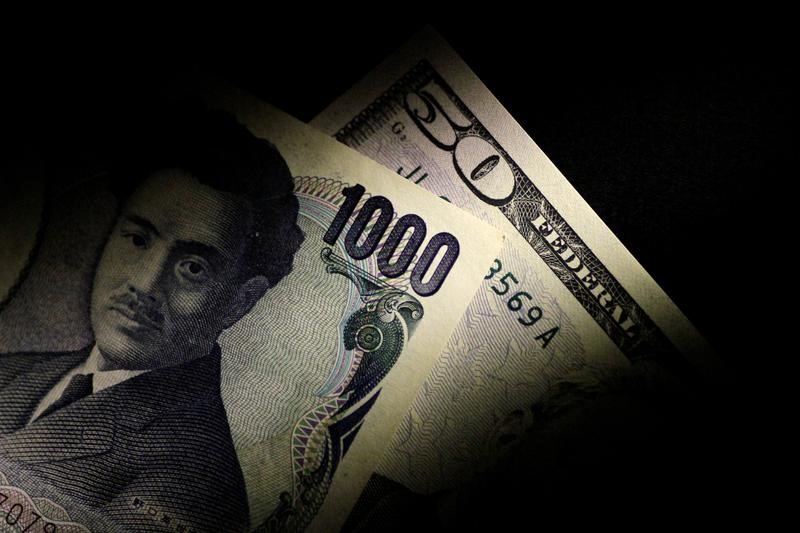Investing.com – The U.S. dollar edged higher in early European trade Friday, but was still on course for a monthly loss, while the Japanese yen slumped after the Bank of Japan largely maintained its dovish stance.
At 02:55 ET (06:55 GMT), the , which tracks the greenback against a basket of six other currencies, traded 0.2% higher at 101.415, rebounding from a near two-week low seen earlier this week.
That said, the greenback remained on track for a monthly loss of just under 1%, after having fallen about 2.3% in March, as traders fretted about the health of the U.S. banking system and the likelihood of the Federal Reserve ending its aggressive monetary tightening as the country’s economic growth falters.
The latest example of the U.S. slowdown came with the release of the first quarter growth data on Thursday, as real in the world’s largest economy increased at an annual rate of 1.1% during the January to March period, slowing from 2.6% in the final three months of 2022.
Next up is the March , the central bank’s preferred measure of inflation, which could be influential to the Fed’s interest rate decision.
The is widely expected to raise rates another quarter of a percentage point next week and then pause on more hikes in June.
Elsewhere, rose 1% to 135.29, with the yen hard hit after new Bank of Japan Governor Kazuo Ueda decided at his first to keep the ultra-easy monetary policy unchanged, making no changes to its yield curve control policy.
The central bank removed a pledge to keep interest rates at “current or lower levels” and said it would “conduct a broad-perspective review of monetary policy”, but the news still disappointed those who had been looking for an immediate policy change.
edged higher to 1.1029, remaining close to its recent one-year high, with the euro on course for a monthly gain of more than 1.5%.
Data from , Germany’s most populous state, released earlier Friday showed that consumer inflation remained elevated in April, rising 6.8% on an annual basis.
There are also inflation numbers from the other German states as well as from and later in the session, as well as the euro zone first-quarter release.
The is widely seen lifting interest rates next week, but its policymakers are likely to remain hawkish given the European economy is showing signs of recovery and inflation remains an issue.
fell 0.1% to 1.2481, fell 0.4% to 0.6606, while fell 0.1% to 6.9163, with the Chinese yuan recovering slightly from an over one-month low hit earlier in the week.
Read the full article here










